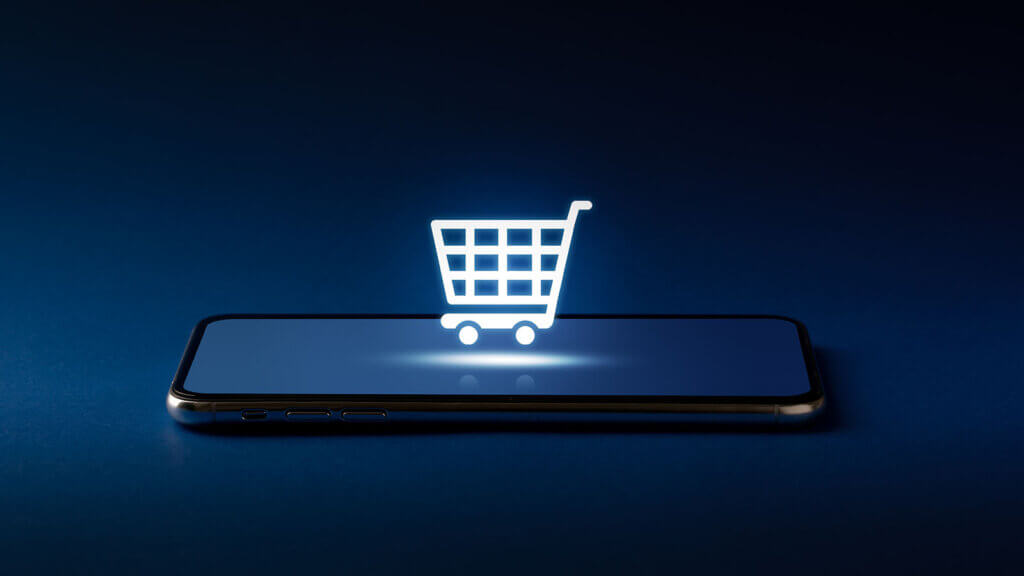E-Commerce Store Optimization
Since the first documented online purchase was made in 1994, e-commerce has expanded into a multi-trillion-dollar industry. More than one quarter of the global population are online shoppers – that’s more than 2.05 billion people. Whether you sell flower boxes or snowblowers, the world wide web is rife with potential.
While there is plenty of opportunity to be captured, there is a plethora of competition as well. This makes vying for the attention of prospective customers that much more difficult and drives up the importance of having an e-commerce store optimized. Optimization doesn’t just refer to having a quick and easy checkout page, it means optimizing all aspects of your site including and not limited to content, user experience (UX), automation software, and a whole lot more.
In today’s article, we’ll cover seven important ways to optimize your e-commerce store and maximize conversions.
Let’s jump in.

What is an E-Commerce Store?
Before we delve into some specific tips to help you create a well-optimized e-commerce store, we want to provide you with an e-commerce store meaning. Shopify defines e-commerce as “the buying and selling of goods or services using the Internet, and the transfer of money and data to execute these transactions.” An e-commerce store provides the goods, services, or digital products.
E-commerce stores can sell through various transactional relationships including retail, wholesale, subscription, drop shipping, selling to consumers, businesses, or even governments. Often, special software or web applications are used to manage an e-commerce store, and are referred to as platforms.
The three primary platform options are:
- Open- Source
- SaaS (Software-as-a-service)
- Headless Commerce
Each option comes with its own array of solutions to best maximize your company’s conversion rate.
What is the Conversion Rate?
Google defines conversion rate as “the average number of conversions per ad interaction“. The goal of your business determines what will be considered as a conversion. A conversion could be a sale, subscription sign up, download, online chat engagement, or simply engaging with the site in a desired way. The conversion rate allows you to track the progress of the specific item for sale, and help you figure out ways to adjust the marketing or business strategy accordingly. The end goal is to turn that potential customer performing the desired action, into a loyal paying customer.
Now that we have provided some background about e-commerce and conversions, let’s look at some ways to optimize them:
1. Provide Personalized Offers
Use of personalized offers can be quite helpful. Use pre-existing data to give customers personalized offers based on previous purchases and spending patterns. A customer who recently bought a winter coat, for example, might get a personalized email offering a discount on a mitten and scarf set. On the digital receipt, include these related products with customer reviews to show that they made the right choice, and that the items will complement their previous purchase. Someone who purchased 10 products might get a notification offering the 11th for free. Personalized offers are a way of rewarding customer loyalty and building a connection with the community.
2. Offer Free Shipping
Did you know that extra costs are the number one reason for shopping cart abandonment? Adding small fees at the end of a checkout process might not seem like a big deal, but to the customer it can come across as a penny-pinching ploy, or a sneaky way to bring in more cash. At this point in e-commerce history, free shipping is almost a given.
Sign up options can also be a nuisance for customers who simply want to purchase a product and not be hassled with signing up for email promotions, so consider allowing them to checkout as a guest simply.
3. Capitalize on Potential Conversions with Card Abandonment Software
Abandoned carts are a sad thing. A customer lands on a site, takes the time to pick out the perfect product, goes through the checkout process, and backs out at the very end. It seems so unfair! Cart abandonment software ensures that, even though this person did not click “submit,” businesses can capture the contact’s information, and use the opportunity to send a one-on-one email informing them of their unfinished transaction.

Get creative with your email strategy, as other e-commerce businesses will be competing in a similar fashion, so you will want to stand out from the crowd. Include testimonials or other reviews to give the customer more confidence in the company, and products they have left behind.
Consider providing a mailing list opt-in at the beginning of your abandoned cart email. It could be that the customer just isn’t ready to buy from you due their lack of knowledge about the company. Until then, you can create a connection through email with newsletters, content links, or product promotions until they’re ready to buy.
4. Use Live Chat
Customers who use live chat are three times more likely to make purchases compared to those who do not. Live chat gives employees the opportunity to answer users’ questions immediately, significantly reducing bounce rate. What’s more, live chat allows agents to deal with multiple customers at once, saving time and increasing efficiency on the business side.
5. Cross-Link to Relevant Categories
A foolproof way to encourage conversions is by peppering cross-links to relevant products throughout a site. A product page featuring tires, for example, might include a sidebar with links to pages featuring different hubcaps or brake calipers. By pairing related items, you increase the likelihood of customers purchasing multiple products, and reporting a positive user experience.
6. Make Blogging a Priority
You might wonder what blogging has to do with e-commerce. The truth is; blogging can help e-commerce by bringing traffic to your e-commerce website. People read blogs before they buy things. People trust the content they read. It helps build loyalty with the brand, position the company as an industry expert, and helps the brand create authority within their space. Focus on creating high quality material that is relevant to the site’s products and that will resonate with your target audience. Share your best and most informative content for free, it will help convey reliability and improve customer engagement.
Take the opportunity within the blog to incorporate your best SEO practices. You will have a better chance at getting pages indexed and increase the likelihood of having the e-commerce site, content, and products seen by your audience. Optimize both Off-Page (backlinks, domain authority, social media promotion) and On-Page (internal linking, URL and page structure, and relevant keyword frequency) SEO.
By including relevant keywords in areas like meta tags, meta descriptions, and headlines, it helps drive organic traffic, bringing a batch of new, interested prospects to the site. For more SEO information, check out the PaintedRobot SEO go-to guide.
Blogging not only informs potential customers, it also provides an opportunity to promote your own products by linking to relevant product pages.
7. Use a Thank You Page
No matter what you sell, or what business you’re in, conversions are what matter most. To achieve success with an e-commerce site, one must personalize content, provide relevant links on product pages, and interact with customers to build loyalty. For more tips on operating an e-commerce store, and other area of marketing, check out the rest of our blog.







